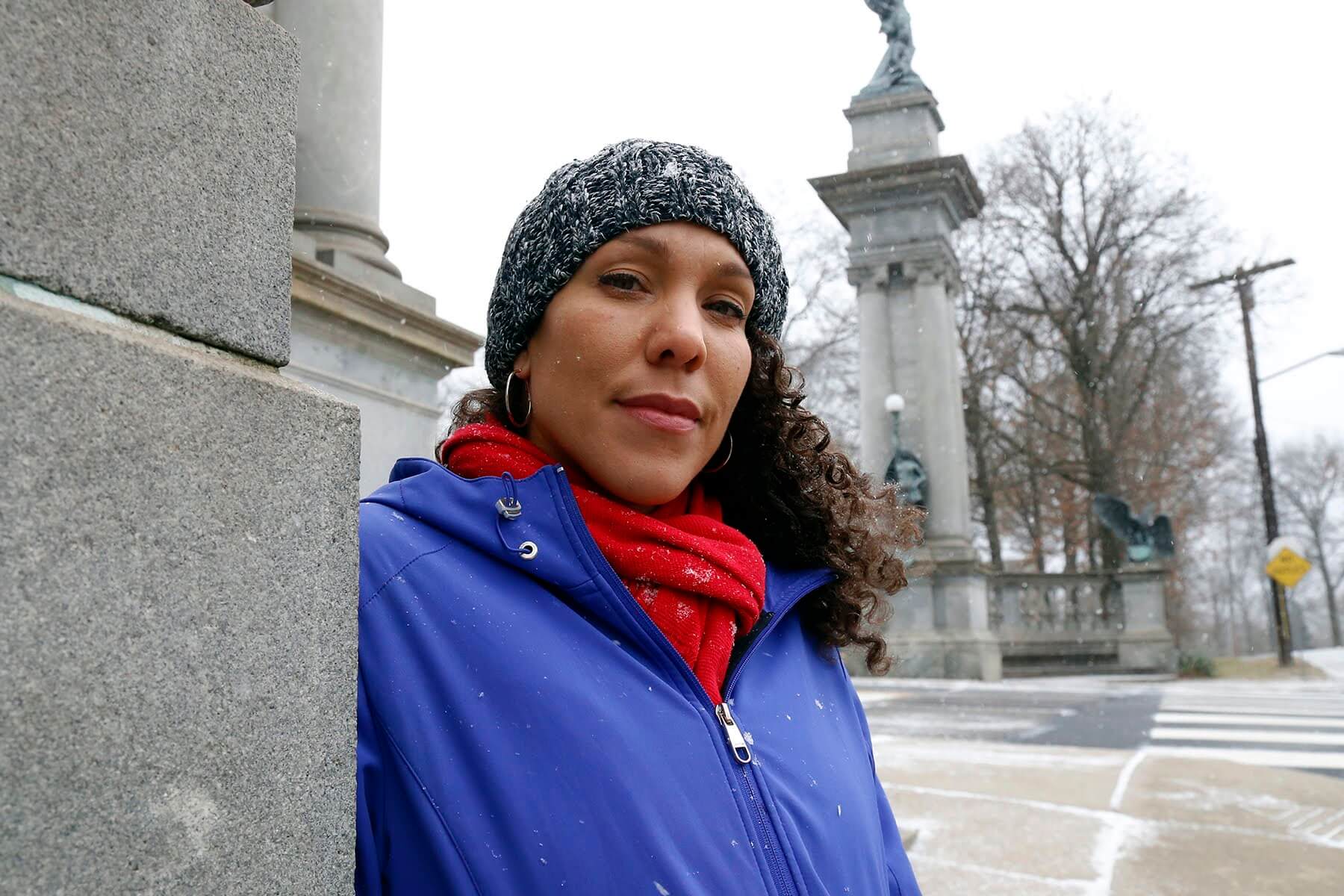


PublicSource spoke with 15 people whose information was likely recorded in the largest study ever on how neighborhoods affect youth outcomes.
Oliver MorrisonAmanda Suto and Cynthia Dallas were born a month apart in Pittsburgh: Suto in December 1979 and Dallas in January 1980. They each grew up in neighborhoods where kids like them from poor households didn’t often succeed.
But they both moved in the middle of their childhoods to more affluent neighborhoods.
Researchers for a long time have wondered about people like them: How much would the move to a more affluent neighborhood help them? How much do neighborhoods matter in shaping who we become as adults?
Dallas and Suto are two of the more than 20 million children across the country who were born between 1978 and 1983 whose lives have been tracked by the Opportunity Atlas, one of the largest studies ever to try to answer those questions. The study used data from the U.S. Census Bureau and tax returns to determine how many in that cohort got pregnant as teenagers, went to prison, got married, and even how much money they made as adults by 2015.
And what the study found was that the effects of a childhood move can be quite significant. Children from similar families and racial and economic backgrounds often led very different lives if they moved to a more affluent neighborhood. And the earlier kids experienced better conditions, the better their outcomes could be.
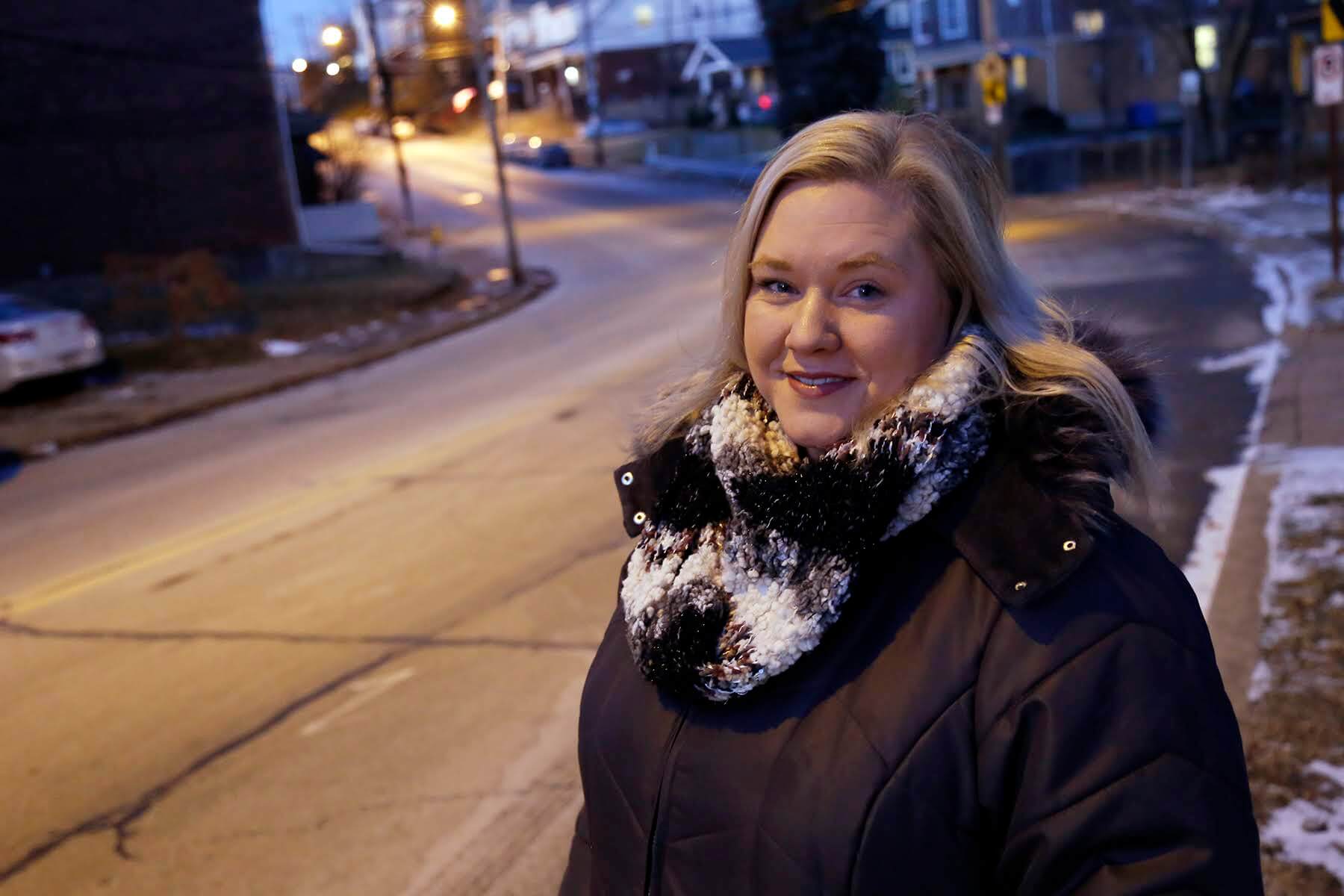

The study found five factors that seemed to help neighborhoods the most: less segregation by income and race; lower levels of income inequality; better schools; lower rates of violent crime; and a larger share of two-parent households. But even these factors cannot account for all of the differences between neighborhoods.
The Pittsburghers from this era grew up at a time when the migration out of the city, after the collapse of the steel industry, was coming to an end. They described childhoods where they were given freedom to wander until the street lights turned off. They climbed trees, bicycled and set up hockey nets in the street — with much less supervision than they give their own children. “Me and my little brother would go down to the creek, catching crawfish, minnows, geckoes, avoiding the stinging nettles,” said Meghan Snatchko from Coraopolis, who also spoke about exploring open stormwater pipes.
Many of their mothers also began to work as they got older. One of Lara Malakoff’s childhood role models was her “Aunt Polly,” a woman down the street from her home in Allegheny West. Malakoff’s mom hired Aunt Polly to take care of Malakoff while she worked as an elementary school art teacher. This wasn’t just a family choice, but a societal change.
Several of the Pittsburghers who came from the most challenging neighborhoods described their turmoil as stemming from conflict at home, alongside the challenges they faced once they stepped out the door.
The regional economy has changed as well: It’s harder for this generation to get ahead. While 92% of their parents outearned their grandparents, on average, only about 50% of this generation is expected to outearn their parents. While Suto earns many times what her mother earned, others are barely earning the same incomes as their parents.
Of course, not everyone’s life trajectory can be measured in dollars and cents. Sherry Holeczy’s family cared more about their church community than their neighborhood of Ross Township or how much money she earned. The study didn’t try to quantify how happy the people in the cohort ended up.
Many of their childhood memories could not be confined to neighborhood boundaries, a picture often complicated by extended families and community organizations. John Tremel, who grew up in Observatory Hill, spent a lot of time outside his neighborhood at the Heinz House, a Boys and Girls Club on the North Shore, which his dad also attended. He remembers paying 25 cents to attend twice per week, and he credits it with shaping his childhood.
Neighborhoods don’t change that much over time, so the researchers of the study say the outcomes of this generation are a pretty good predictor of the outcomes children today could expect in many neighborhoods.
Christine Nestrick grew up in McKnight Village in the suburb of Ross Township and remembers her childhood as idyllic. She moved back to the region in 2017 after a decade away. She often feels nostalgic watching her daughter play on the same playground toys she did as a kid.
"For me, it’s an out-of-body experience,” she said. "If I close my eyes and stood there, I can’t believe that many years have passed. I feel I could step back into that time period of my life. The neighborhood is sort of like it’s the 1950s and nothing changes.”
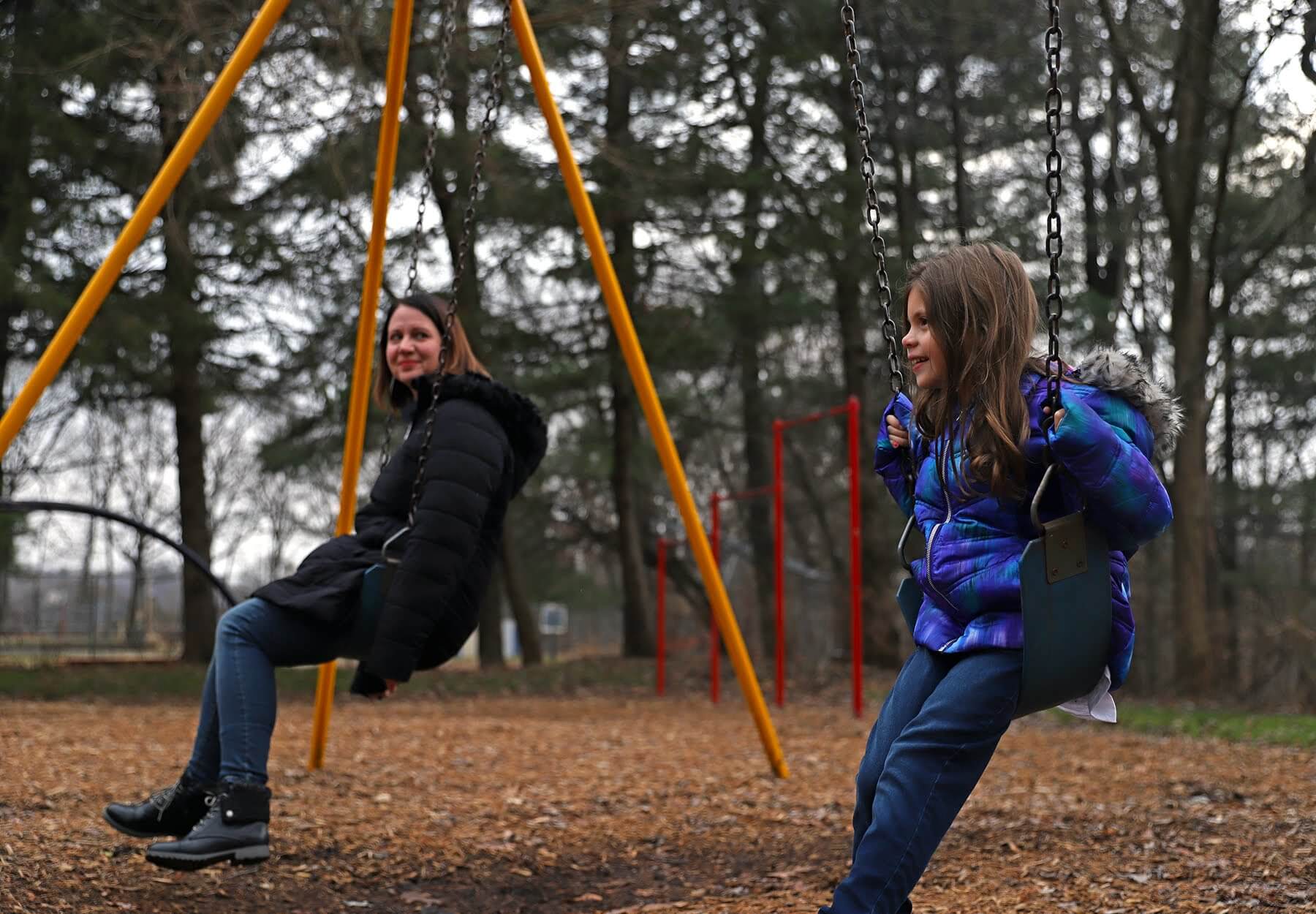

But some neighborhoods do undergo drastic change. The working class childhood Scott Moffat remembers from Lawrenceville is very different than today. And Beau Boughamer remembers when the empty fields in Cranberry started to be replaced by four-bedroom homes.

Cynthia Dallas recalls being the only student of color in her Catholic elementary school in Morningside. She and her sister dealt with racism from neighbors, she said. At one softball game, a white girl on the other team yelled at her, among other insults, “Why don’t you go back to Africa?” Her dad ran onto the field, shouting.
“It was absolutely awful,” she said. “Nobody did anything and they looked at us like, ‘Why are you so offended?’”
Soon after that, Dallas decided to move in with her grandmother in Highland Park because her parents, who didn’t make much money, were constantly moving from house to house.
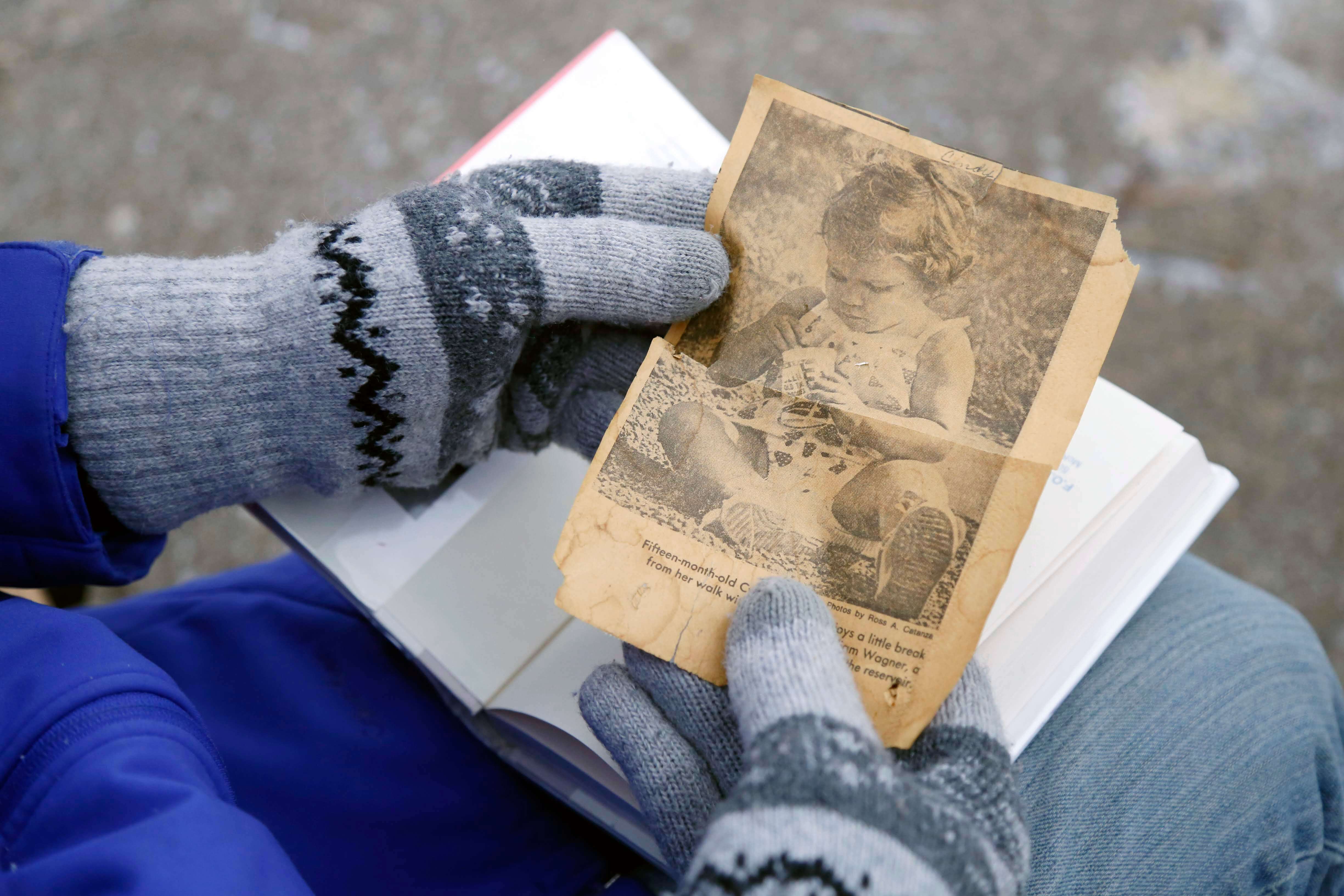

The move from Morningside to Highland Park was geographically right next door, but it gave Dallas a big advantage. Black females who grew up in Highland Park earned $10,000 more per year than their counterparts in Morningside did in 2015.
She started attending Reizenstein Middle School where, she said, there were metal detectors and a lot of fights. But in this school and neighborhood, she felt like she and her family makeup — a Black father and a white mother — fit in better.
In high school, her parents’ lives stabilized and they cheered her on during basketball games at Schenley High School. Dallas led her high school team to the city championship.
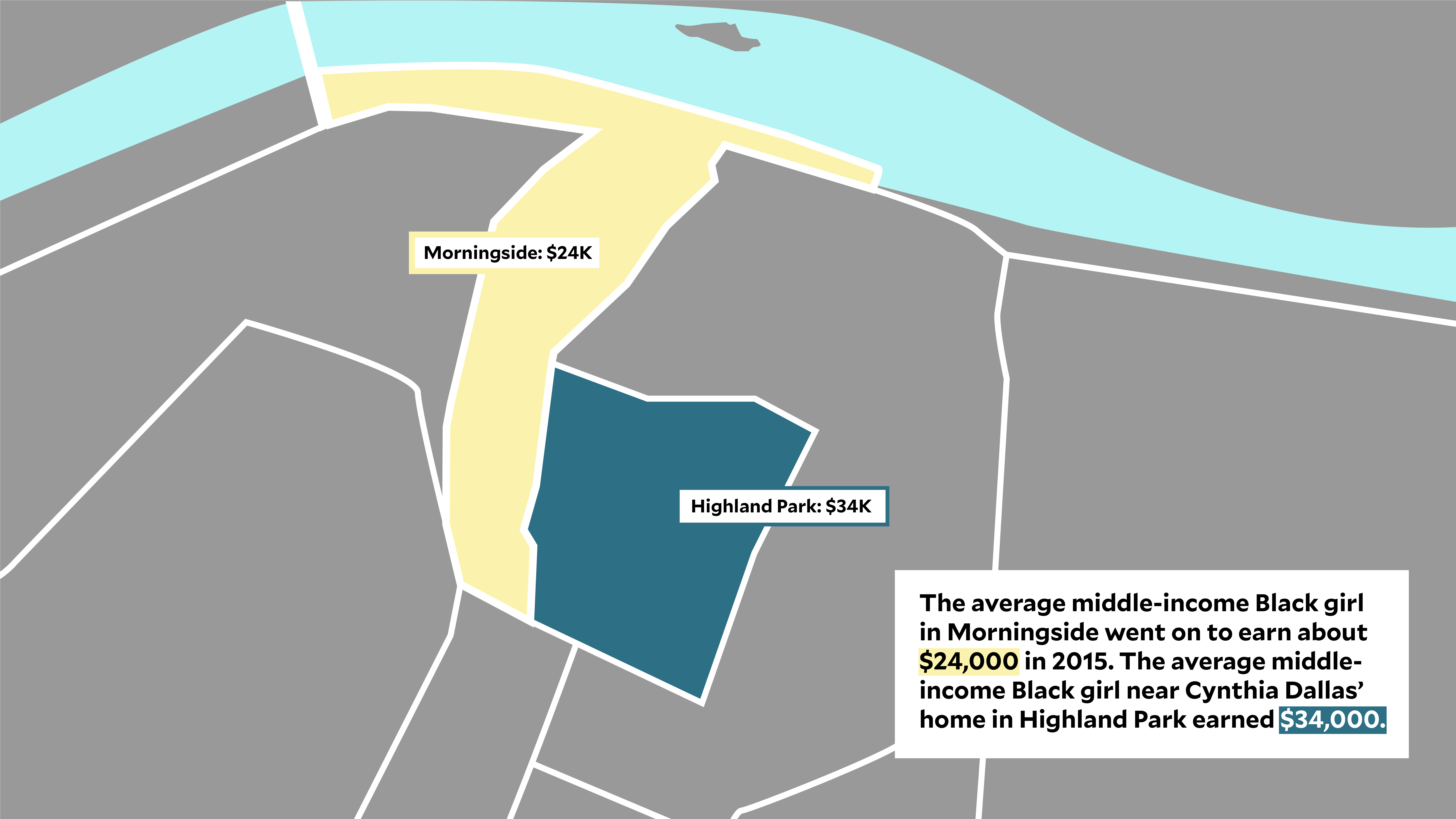
She was eventually drafted into the WNBA and later moved to Hollywood to act in TV shows and films. She recently moved back into her old home in Highland Park with her mother after finishing a two-year acting residency in Ireland.
She still remembers her time in Highland Park and her high school basketball championship as the pinnacle. “My grandmother was there, Dad was there, Mom was there and we won,” she said. "I was so happy. I don’t think I have ever been as happy as I was in that moment.”

Amanda Suto’s childhood in the Perry South neighborhood was turbulent. Her father spent time in jail, and her mom had a series of rocky relationships. She caught rides to school because her mom couldn’t afford a car.
According to the Opportunity Atlas, Perry South residents were predominantly Black and mostly earning low incomes. She recalls being one of the few white girls in her elementary school.
She also recalls violence, including a drive-by-shooting at the middle school and the death of a friend who was strangled.
Everything changed when Suto was 14, and they moved to the affluent, majority-white Richland Township when Suto’s mom moved them in with her new partner.
Suto described it as “hell.” There were almost no Black children, and, though she was white like the majority of the school, the students called her racial epithets for dressing and talking differently.
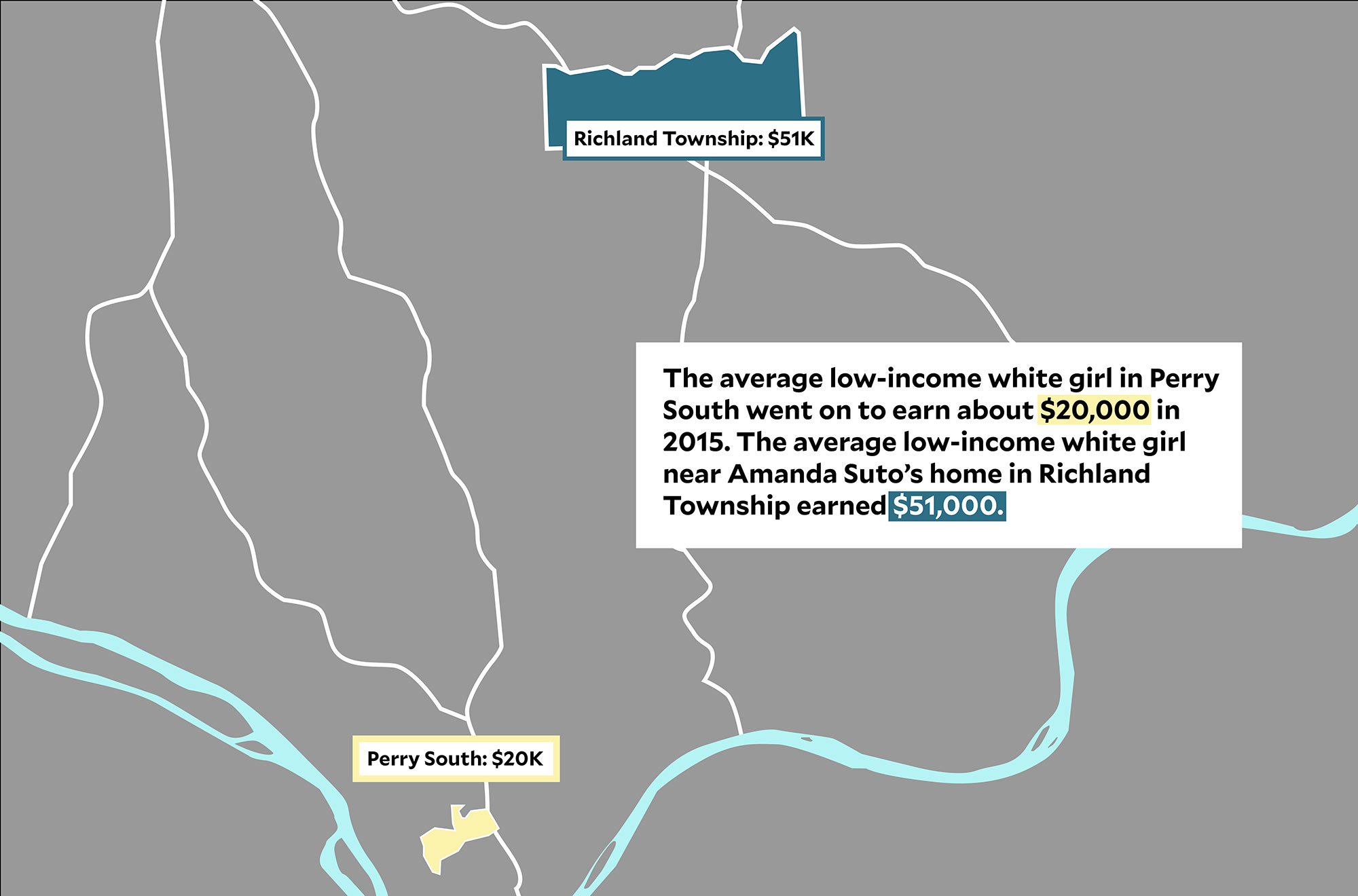
She recalls showing her mom a failing grade from gym class. "This is what you got?” her mom said. "So you are going to be a shit your whole life?”
It took the wind out of her. But she said her mom motivated her and her older brother to attend college. "I watched her shed tears and worry about how she was going to get to work and put milk in the refrigerator,” Suto said.
The new neighborhood dramatically improved her chances of economic success. The average low-income white girl in Perry South went on to earn about $20,000 in 2015, while the average low-income white girl in her part of Richland Township earned $51,000.
Suto earns an even higher salary as a clinical trial manager for pharmaceuticals. When her children start acting ungrateful, she’ll sometimes drive them through her old neighborhood. “This is where I came from,” she’ll tell them, and the car gets quiet.

Scott Moffat grew up in Lower Lawrenceville, which was one of the worst neighborhoods in Pittsburgh for a white kid to grow up in back in the early 1980s.
The Opportunity Atlas shows that white children there went on to earn about $34,000 per year by 2015; there was only one neighborhood between the Allegheny and Monongahela rivers in the city where white children earned less — East Liberty.
(Lawrenceville wasn’t a great place for Black kids to grow up either but there were a number of neighborhoods where Black kids struggled more.)
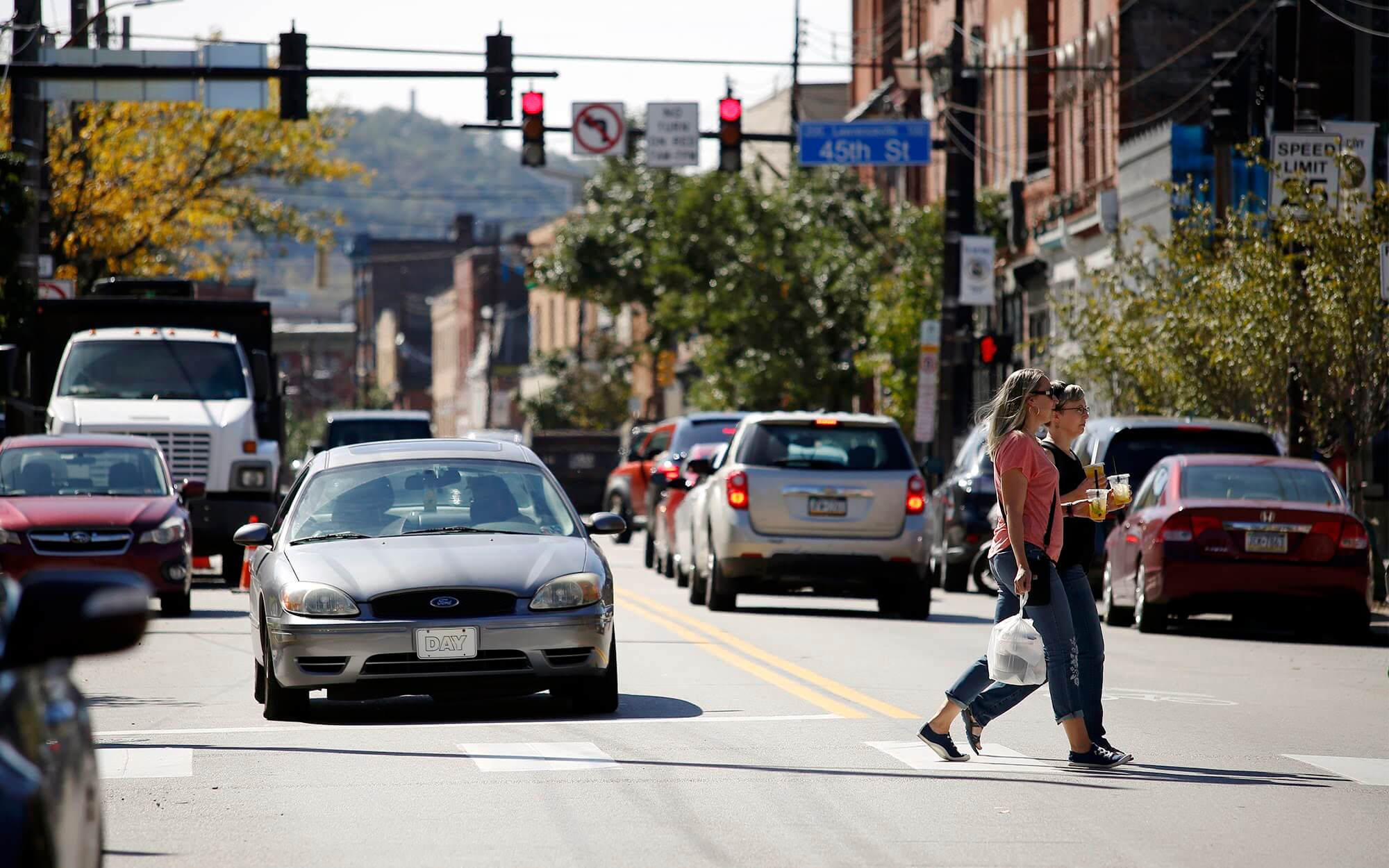
Moffat’s dad was a firefighter who worked down the street. He was proud of his dad’s job and didn’t think of himself as poor, even if his parents had to squeeze three children into a single bedroom. He and his brothers made videos with an over-the-shoulder camera and played across the street at Arsenal Park.
His parents fought frequently, which was a strain on life at home, he said. In high school, Moffat got a job and a girlfriend and made himself too busy to worry about what was happening at home.
Moffat, who has four children, was the only one in his family who attended a Catholic high school. He thinks it may have been critical to finding his way to a steady profession as a police officer with Allegheny County.
"A lot of it has to do with school. I’m not knocking public schools,” he said, but he credits the staff at his high school for helping him get into LaRoche College, where he pursued his career in criminal justice.
Scott’s twin younger brothers, who are in the same age cohort of the study, both got caught up in the criminal justice system. They are nearing the end of prison sentences. His older brother is a delivery truck driver who lives with his girlfriend in Cranberry.

Beau Boughamer remembers the time a chiropractor visited his eighth-grade science class in Cranberry.
He showed X-rays of a woman whose spine was severely bent from cleaning houses and hauling a vacuum. Boughamer quickly realized it was his mom the chiropractor was talking about.
She never got a vacation and returned to work three days after delivering his little sister. Cranberry was farm country then, and they lived in trailer parks. His dad was a night shift janitor for Westinghouse. His parents separated when he was 15.
"We went from poor to poorer,” he said. He once bought a car for $900 that his mom ended up taking for her own use after her car broke down.
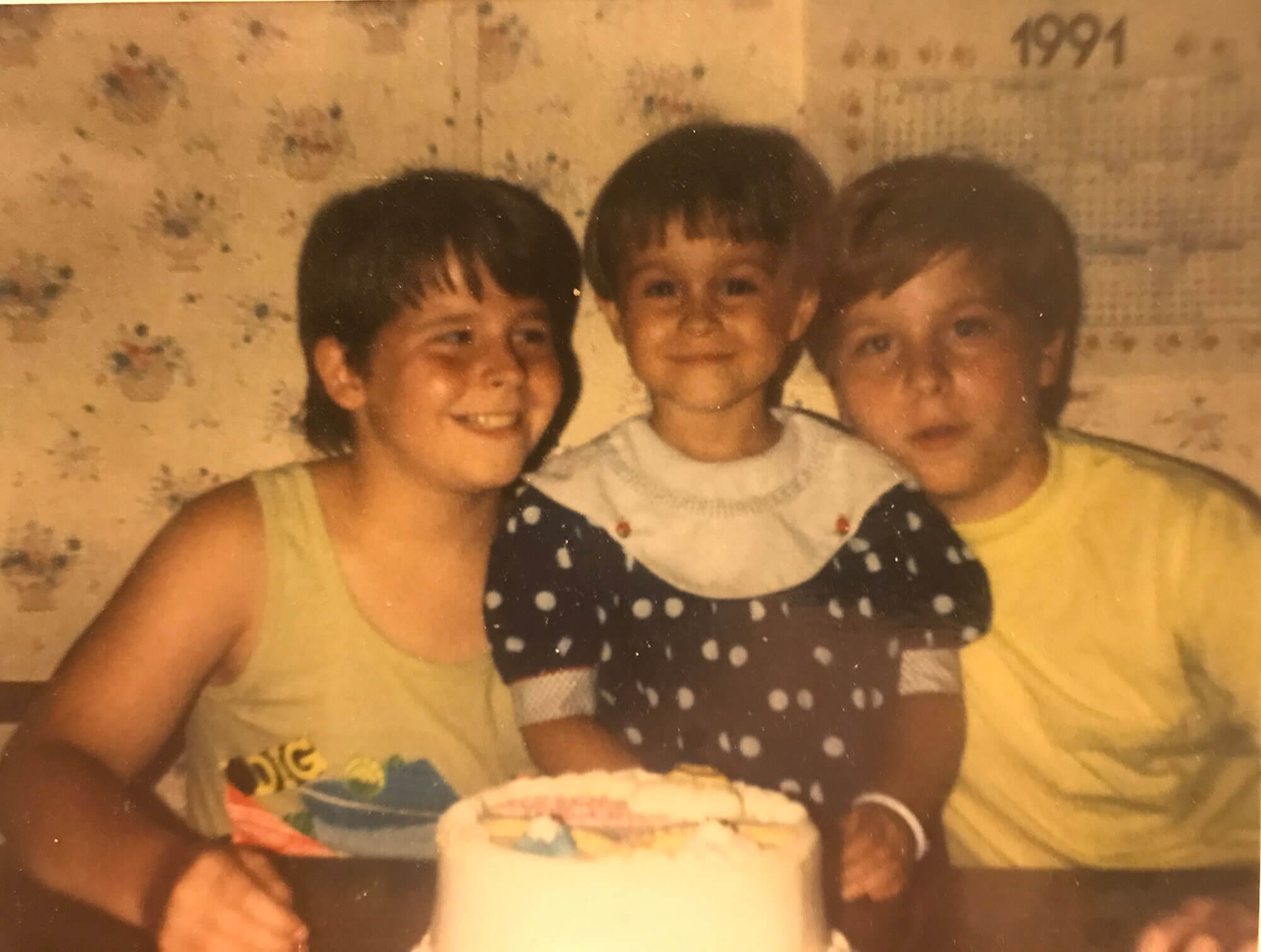
Where they lived meant Boughamer would attend the Seneca Valley School District. And the district boasted a cutting-edge TV production studio at the time. Boughamer went on to be a journalist in his first career.
Growing up, a new Cranberry emerged across the street with four-bedroom homes that seemed like mansions. According to the Opportunity Atlas, high-income white kids in the neighborhood earned an average of $60,000 in 2015. Kids from low-income families earned an average of $41,000.
Boughamer and his two siblings attended college. “We pretty much beat the odds,” he said. Now living in the suburbs of Baltimore, he makes a six-figure salary, working at a foundation that tries to ensure that a child’s destiny is not determined by his or her ZIP code.

Sarah Arnold was a latchkey kid, she said: her dad was a workaholic doctor and her mother worked long hours during a medical residency.
She grew up in Point Breeze, a neighborhood where children her age went on to some of the most high-paying jobs in the entire city.
She attended a private high school. Arnold suffered from depression at an early age, and it hit even harder when she went away to college. "I had to take some time off and get into a more aggressive treatment,” she said. "My early 20s were spent recovering.”
But then she found her stride, went to medical school and now works in a hospital as a doctor, like her parents. She picked a specialty, a hospitalist, that has flexibility so she can spend more time at home with her husband, who is a chef, and their 4-year-old.

Rachel Majcher grew up in Castle Shannon, only one block each way from Baldwin Township and Mt. Lebanon. This existence on the borders shaped her childhood.
Her dad was a union millwright at the local steel mills, and her mom stayed at home. Their parents had a pool in the backyard, and their basement was filled with dolls on one side and chalkboard and musical instruments on the other. “I can’t ever remember a time when we didn’t get the Cabbage Patch [doll] for Christmas,” she said.
But that sense of being provided for dissipated when she and her sister found themselves attending school in Mt. Lebanon after a school merger. Suddenly, she was going to school with kids wearing “very nice sweaters, and ours came from the uniform company.”
Their mom picked them up from school in a Chevy Caprice Classic, not the station wagons with wood paneling that all the other mothers seemed to be driving.
"We felt self-conscious that our car didn’t look like everyone else’s cars,” she said. “My parents tried to instill in us that the kids we went to school with were no better than we were.”
According to the Opportunity Atlas, kids her age in Castle Shannon went on to do much better economically than kids from Carrick and Brookline in the city just north of them. But they didn’t do as well as the kids from Mt. Lebanon and Whitehall.
Majcher’s parents let her attend Keystone Oaks High School as a ninth grader. She was finally with kids from her neighborhood again. The teachers were welcoming and she felt like she belonged. She finished 10th in her class of 222, she said.
Majcher is now a nurse at the Young Scholars of Western PA — a public charter school a block away from her parents' old house.
She said she doesn’t make much more money than her parents did, but she feels rewarded by helping middle schoolers who feel like outsiders like she once did.
Oliver Morrison is PublicSource’s environment and health reporter. He can be reached at oliver@publicsource.org or on Twitter @ORMorrison.
This project has been made possible with the support of The Grable Foundation.